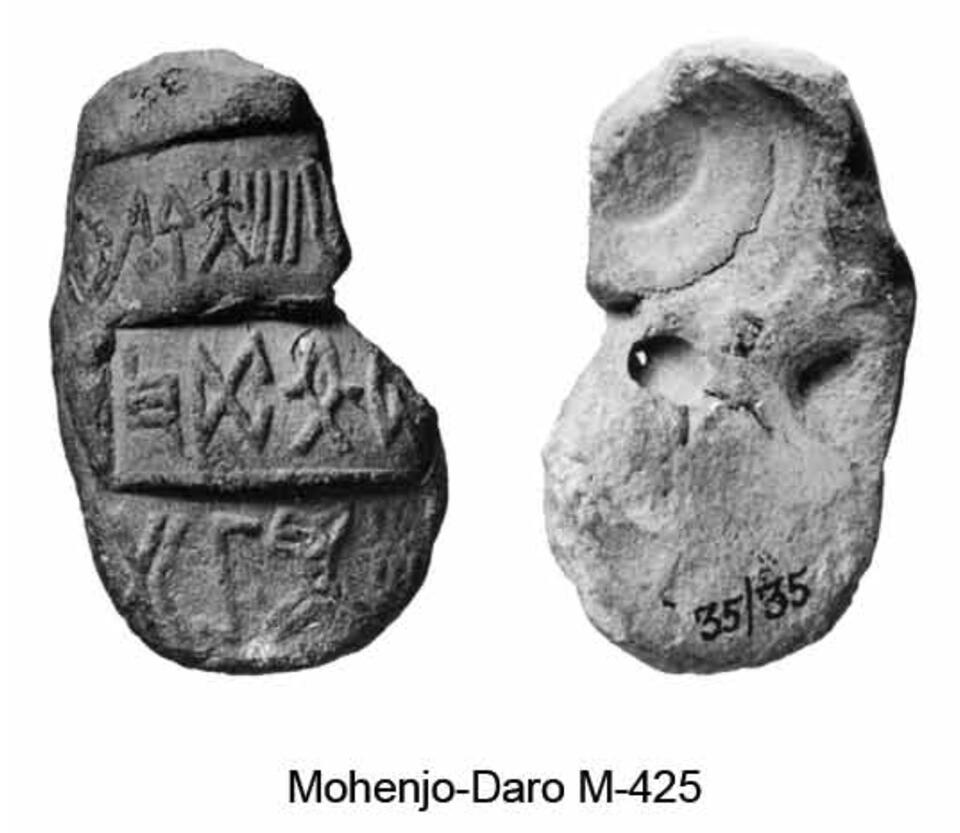So much attention has been focused on seals, that we sometimes forget that producing multiple sealings were their most prosaic and basic function: impressions on clay or other humble materials to perform some sort of basic administrative functions. Indeed, while it has often been assumed that sealings in the ancient Indus valley denote ownership of goods in transit, Dennys Frenez writes in this excellent paper that during the Bronze Age in the wider Middle East (including Greece), "the detailed study of the lockers and containers that were sealed, the frequent discovery of the seals used to stamp them, and chemical analysis of the clays used for sealing demonstrated that the seal-based administration system was not used to secure the integrity of shipped packages, but rather to manage and record the access to goods stored within storehouses under the responsibility of specific bureaucrats working under a centralized hierarchical institution, based either on kinship bonds or a political organization" (p. 22). Based on his pioneering work on a large batch of sealings found at Lothal, and those from other Indus sites, Frenez writes that the "evidence most likely testifies to the use, also in the Indus Civilization, of seals and sealings mainly for the local management of goods and not for securing the shipping of packages" (Ibid.). This is an extremely important point, and points the way to looking at sealings as evidence of a wider administrative behaviours and practices that could shed light on the organization of the ancient Indus polity.
That said, he goes on to examine why the Indus sites have a ratio of seals to sealings discovered (about 10:1) quite the opposite of other contemporaneous civilizations; previous scholar's conceptions of sealings; and notes the interesting point from the great authority, Enrica Fiandra, on clay sealings found in the rest of the world, that "she never saw clay sealings so small, carefully shaped and stamped, and morphologically complex like those from the Indus site of Lothal in Gujarat" (p. 24). Furthermore, Frenez makes the clear case that in its administrative uses, it was the text of the seals that counted, not the iconography (unicorn, bison, etc.). Finally, the paper delves into the fascinating new science, at least as far as Indus sealings goes, of using modern scientific analysis methods to decode what the sealing actually was attached to (doors, lockers, pegs on walls, wooden boxes, basket, ropes and so on, not to mention some containers possibly unique to Indus civilization). This opens yet another dimension in considering the utilization of these exceptionally meaningful artifacts.
This illustrated, thought-provoking and highly recommended paper is part of a forthcoming volume Studies on Indus Script based on a conference of the world's leading Indus script scholars at Mohenjo-daro in early January 2020.
Image: Mohenjo-Daro (Sindh, Pakistan). Clay sealing with multiple impressions of different seals and inscribed on the backside once removed from the container they sealed (from Joshi and Parpola 1987).
- Log in to post comments

